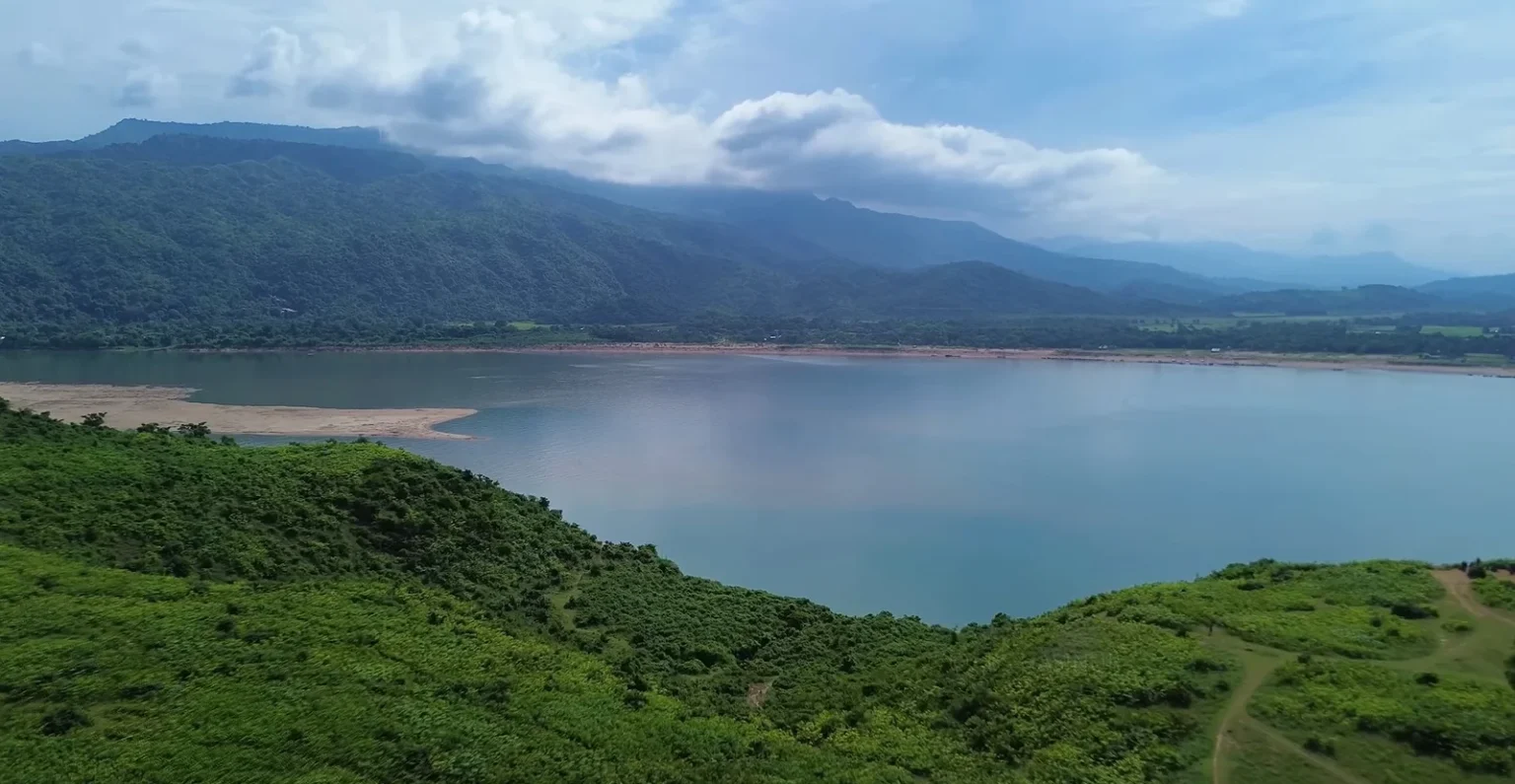Morning light spills over the vast waters of Tanguar Haor, blurring the line between the silver sky and mirrored surface. The air carries the cool scent of rain, while herons rise in slow arcs above the still water. Wooden boats drift in silence, their shadows stretching toward the horizon.
“When the monsoon comes, this becomes an endless ocean,” says Salam, a 45-year-old boatman, his eyes scanning the watery expanse. “The water becomes our road, our market, our life.”
Nestled in Sunamganj, near the misty Meghalaya hills, Tanguar Haor is a 100-square-kilometre wetland that sustains a rich ecosystem and a vibrant human community. It is home to over 140 species of fish, more than 200 species of birds, and thousands of families whose lives ebb and flow with its seasonal tides.
Recognised as a Ramsar site for its ecological importance, the Haor swells into an inland sea during the monsoon, then retreats in winter to reveal fertile land where migratory birds gather in spectacular numbers.
How to get there
Reaching Tanguar Haor is an adventure. From Dhaka, travellers can take a non-AC bus from Mohakhali or Sayedabad, served by Shamoli, Hanif, Ena, Bengal, and Relax buses, costing around Tk 800. For a more comfortable ride, AC coaches run at Tk 1,100 to Tk 1,300 per way, while AC sleepers offer a restful journey for Tk 1,500 to Tk 1,600.
The scenic train from Dhaka to Sylhet is another option, with fares ranging from Tk 265 to Tk 1,099 depending on class. The train ride melts the cityscape into rolling green hills, a preview of the tranquillity ahead.
From Sylhet, the journey continues to Sunamganj by private car, a beautiful two-hour ride through lush landscapes, costing around Tk 3,000. Alternatively, a one-hour flight to Sylhet (Tk 2,800–4,000) lets you skip the road and connect by car or CNG directly to ShahebBari docks.
Upon arriving in Sunamganj, a quick 5-7-minute auto or mishuk ride (just Tk 10) takes you to Mallikpur (Boithakhali Ghat) or Saheb Bari Ghat, the main gateways to the Haor where most luxury houseboats await.
For overnight stays, Sunamganj offers comfortable options like Grand Sunamganj Hotel, Nurani Inn, and Ayan Baba, while Sylhet’s hospitality lets visitors rest before or after their Haor journey.
On the water
Boat trips across Tanguar Haor are best booked in advance, especially during peak seasons. Among several operators, Bojra The Houseboat and Joshnar Golpo stand out for their comfort and attentive service.
Bojra’s fleet of nine houseboats blends safety, style, and hospitality, backed by BIWTA licensing, skilled skippers, and a cheerful young crew. Meanwhile, Joshnar Golpo operates eight boats, offering visitors a blend of comfort and an authentic Haor experience. Packages range from Tk 6,000 to Tk 10,000 per person for a two-day, one-night trip, including meals, cosy cabins, guided sightseeing and those quiet, lantern-lit nights anchored beneath a vast sky.
What to see
- Jadukata River
Flowing along Sunamganj’s northern edge, the Jadukata forms a natural border with India’s Meghalaya hills. In winter, its crystal waters mirror lush green slopes; during monsoon, its currents surge with energy, carrying stones gathered by local labourers. - Barikka Tila
A gentle hillock near the Jadukata offers rare elevation in this watery world. From its summit, the panorama stretches across shimmering Haor waters, Khasi hills, and dotted fishing boats. At sunset, the scene glows with deep amber hues. - Shimul Bagan
In late winter, the Haor blooms fiery red as cotton trees carpet the ground with their vibrant petals, a fleeting spectacle beloved by photographers and travellers alike. - Niladri Lake
Nestled in Takerghat, this former limestone quarry shimmers in turquoise and deep blue, its still waters embraced by stone hills. A tranquil contrast to the ever-changing Haor landscape. - Tanguar Watch Tower
From this vantage point at the wetland’s heart, the horizon feels endless. Winter skies here come alive with flocks of migratory birds from whistling ducks to rare pelicans, creating a living mosaic.
The living landscape
Tanguar Haor’s beauty is inseparable from its way of life. Fishermen cast nets in the early light, children paddle to floating schools, women dry fish on bamboo racks and from distant villages, the songs of Hason Raja drift across the water.
Majir Hossian, 30, a boatman, shares how the Haor has transformed local livelihoods, saying, “Earlier, during the Haor season, income would stop completely, land would flood, roads would go underwater. But now, water has become a blessing for us. We earn good money after the season ends, something we never had before. The family’s fixed income has increased and many relatives have started businesses centred around the Haor. Our standard of living has improved significantly.”
Evenings here are golden and calm, the sun sinking into the water, lanterns flickering on anchored boats, and the night filling with the soft rustle of reeds, the splash of fish, and the call of unseen birds.
When to visit
The monsoon months (mid-June to mid-November) reveal the Haor at its fullest, swelling into an inland sea. Winter brings cooler air, open skies and spectacular migratory bird sightings.
Whenever you visit, Tanguar Haor is more than a destination; it is a living landscape, shaped by seasons and sustained by the resilience of its people. Its beauty flows not only through water and wildlife but in every oar stroke, every bird call and every tide that comes and goes.


